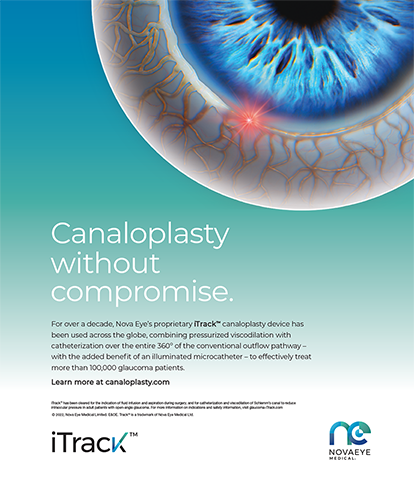The reason patients seek vision correction is to reduce or eliminate dependence on spectacles or contact lenses. Laser vision correction removes tissue to accomplish this goal, and visual and refractive results of PRK as well as LASIK have been published in peer-reviewed journals. The results of laser vision correction for eyes that might be considered candidates for orthokeratology (OK) (-1.0 to -6.0 D of myopia and less than 1.0 D of astigmatism) are shown in Table 1. I performed all the surgeries using the SKBM (Summit Krumeich Barraquer Microkeratome, Alcon Laboratories, Fort Worth, TX), monovision cases are excluded, enhancement procedures are included, and cases with a BSCVA of less than 20/25 preoperatively are excluded. The follow-up was greater than 1 month (mean, 5 months). Three eyes lost two lines of BSCVA, and two eyes lost three lines; 11.3% saw 20/16 without correction. There were no flap-related complications, infections, or other complications from other sources.
OK today is not the same OK of yesteryear. Although there is a paucity of peer-reviewed articles, the current OK, using highly gas permeable contact lenses, has shown improved results. There are many advantages in using OK. There are no microkeratome or wound healing risks, there is a minimal risk of infection, there is no loss of BSCVA, and no corneal warpage. It is also totally reversible. Based on theoretical radius of curvature changes over a diameter of 4 to 6 mm, using the Munnerlyn formula, the volume of tissue that can be ?displaced? would permit a maximum correction of 4.0 to 6.0 D of myopia (although an average reported correction is less). Users wear a retainer lens (usually on an overnight basis) to maintain the new flattened curvature. OK can correct some astigmatism if the steep meridian is in the vertical meridian, but for the most part, it is a spherical procedure. The effect of the procedure is lost hours after lens removal, although most of the effect can be maintained for up to 24 hours, allowing the patient to have the benefit of satisfactory unaided visual acuity.
LASIK and PRK patients do not like uncorrected visual acuities worse than 20/25, and some patients even complain about 20/25. These patients do not like fluctuations in UCVA, and they do not like decreased vision at night. Therefore, there will be few patients who will accept OK if they need their vision more than 12 hours a day. If the patient does not wear the retainer lens on consecutive nights, the UCVA degradation will be significant. The added office visits needed to achieve OK stability and the ongoing annual costs for lens replacement, in addition to the known symptoms of wearing RGP lenses, will limit the number of candidates. For eyes with less than 3.0 D of myopia, OK may have a percentage of eyes with similar UCVA outcomes compared to LASIK. Eyes with scotopic pupil diameters greater than 6.5 mm will reduce the number of potentially successful OK candidates.
The subjective fitting techniques for OK depend on clinical judgment of contact lens fit combined with achieving a topography pattern that has planned peripheral corneal steepening and irregular astigmatism (Figure 1). If a refractive surgeon found similar patterns after surgery, he or she would certainly be concerned that either the ablation was decentered, irregular, or some untoward effect had occurred. There are no data that assess the long-term clinical significance of these topography patterns. Likewise, the cause(s) of the reported increase in midperipheral corneal thickness are yet to be elucidated.
OK is useful for the temporary correction of myopia (without astigmatism) for most eyes with up to -6.0 D, but the majority of eyes that respond to the procedure have less than -3 D of spherical myopia. The risks appear low, but we need long-term assessment of the induced topographic changes. The best candidates appear to be those whose myopia has not stabilized.
Perry S. Binder, MS, MD, practices at the Gordon Binder Vision Institute, San Diego, California. He does not hold a financial interest in any of the materials presented herein. Dr. Binder may be reached at (858)455-6800; garrett23@aol.com

